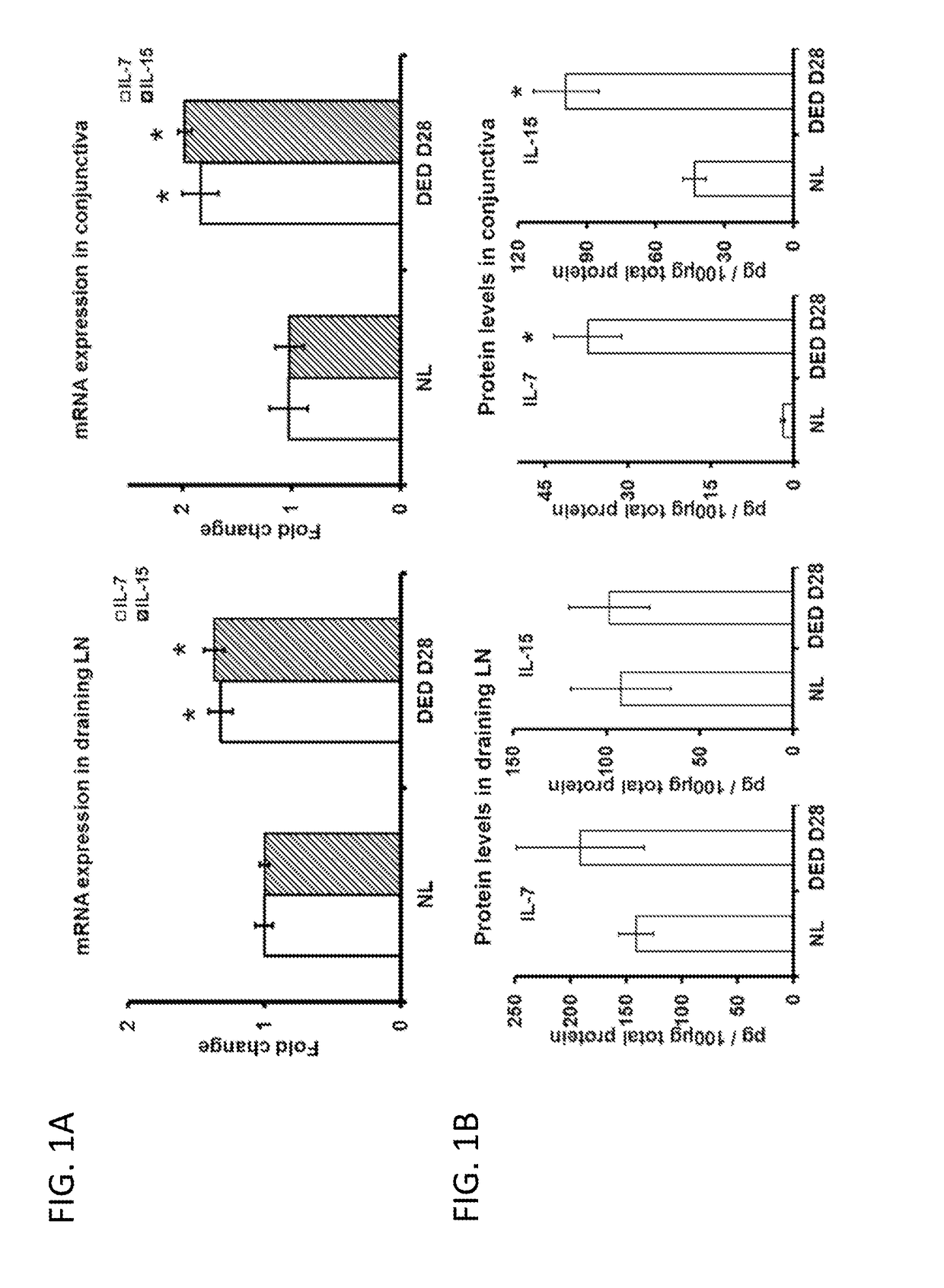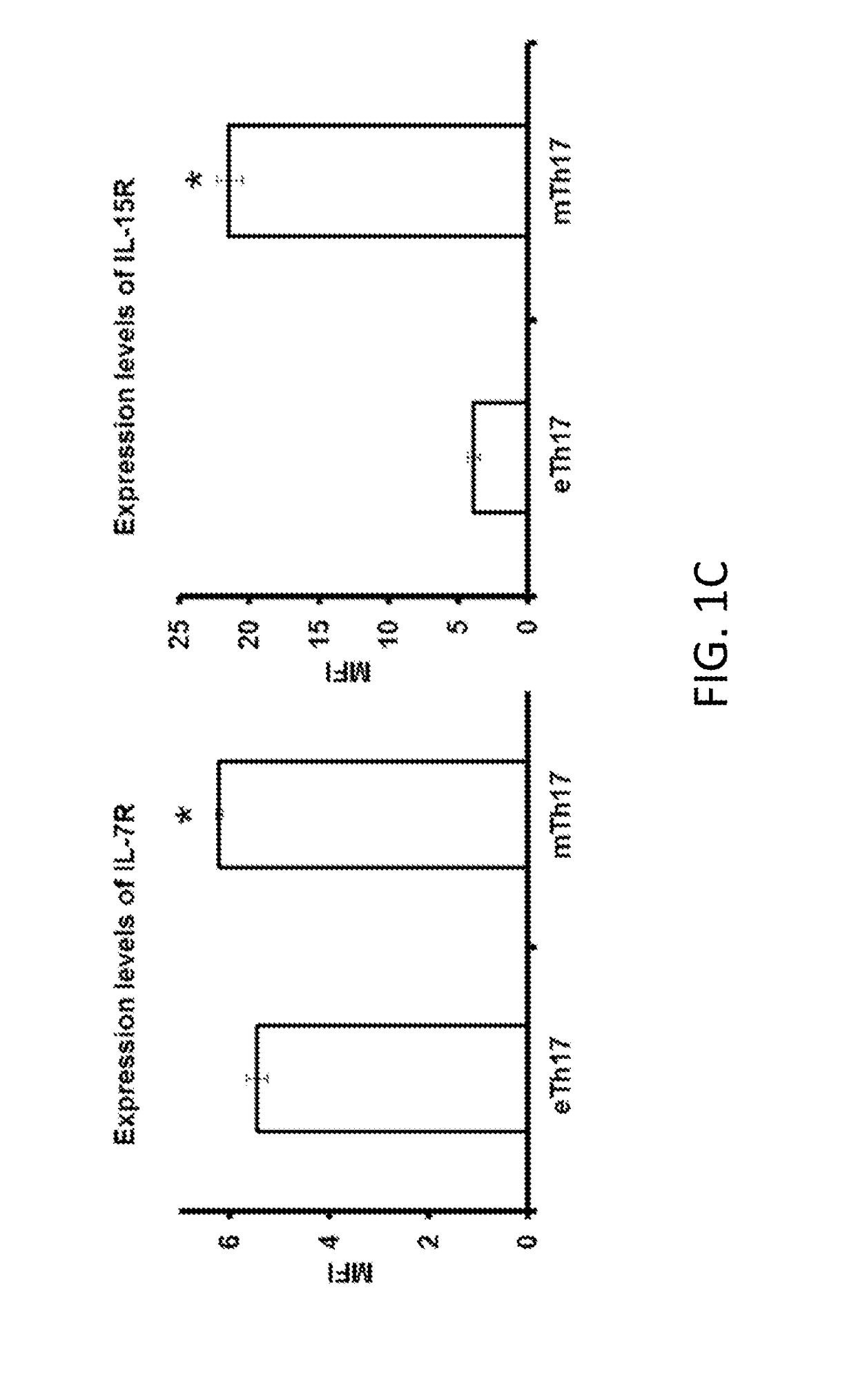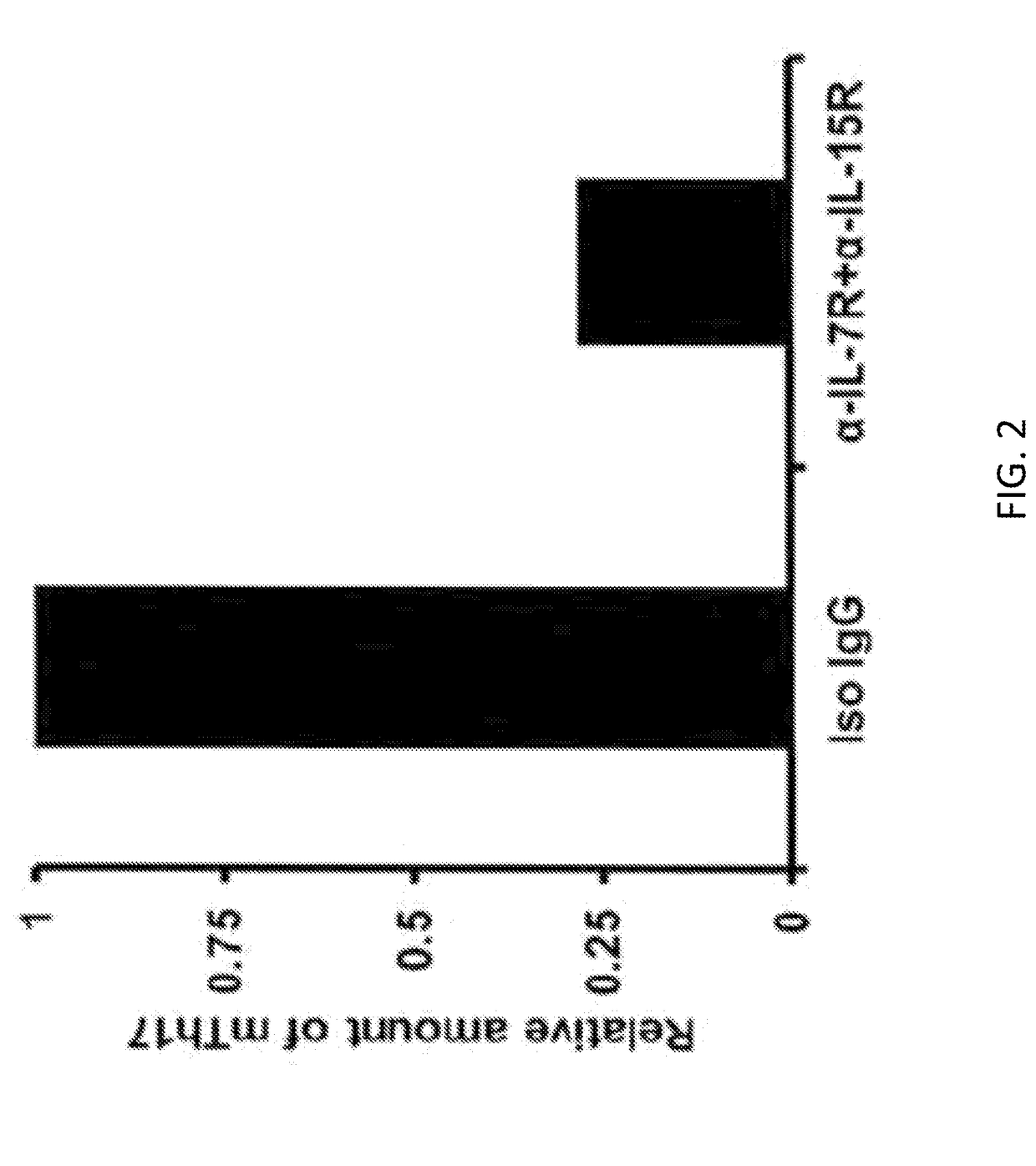Therapeutics for ocular immunoinflammatory diseases
a technology for immunoinflammatory diseases and ocular tissues, applied in the field of ophthalmology, can solve the problems of limited long-term use of corticosteroids and debilitating effects of diseases on activities, and achieve the effect of reducing the abundance of th17 cells
- Summary
- Abstract
- Description
- Claims
- Application Information
AI Technical Summary
Benefits of technology
Problems solved by technology
Method used
Image
Examples
example 1
f of IL-7 / IL-7R and IL-15 / IL-15R Signaling Inhibition on the Maintenance of DED Memory Th17 Cells
[0169]A goal of this study was to show that diminishing or eliminating memory Th17 cell-mediated ocular surface inflammation in DED can be achieved by interfering with the survival of memory Th17 cells through the topical blockade of IL-7 / IL-7R and IL-15 / IL-15R signaling. Experiments were performed as described below.
[0170]Chronic DED develops when mice are exposed to desiccating stress using a controlled environment chamber for 14 days and then housed in a standard environment for additional 14 days. There is an increase in the expression levels of IL-7 and IL-15 in both ocular surface and draining lymph nodes (DLNs) (FIG. 1A). In addition, memory Th17 cells from chronic DED also exhibit a significant up-regulation of both IL-7R and IL-15R (FIG. 1B).
[0171]Next examined were the effects of IL-7 / IL-7R and IL-15 / IL-15R signaling blockade on the maintenance of DED memory Th17 cells using an...
example 2
reatment with IL-7 and IL-15 Inhibitors Reduces DED Severity
[0173]In vivo topical treatment with anti-IL-7 or anti-IL-15 antibodies significantly decreased disease severity and depleted memory Th17 cells in chronic DED mice. DED was induced in mice and the mice were treated with topical anti-IL-7, anti-IL-15, or isotype IgG (control group) eye drops for 14 days. Both anti-IL-7 and anti-IL-15 treatment significantly decreased disease severity as compared with control group (FIG. 5A). At the end of the treatment, ocular surface memory Th17 cells were almost completely depleted by each of anti-IL-7 and anti-IL-15 treatment (FIG. 5B).
[0174]Mouse IL-7 polyclonal antibody was used as the anti-IL-7 antibody in this study (Clone # AB-407, R&D Systems, Minneapolis, Minn., USA) at a dose of 10 μg three times per day (1 mg / ml). This antibody was provided in lyophilized form by the manufacture (R&D Systems) and was reconstituted in sterile phosphate buffered saline (PBS).
[0175]Anti-mouse IL-15 ...
PUM
| Property | Measurement | Unit |
|---|---|---|
| Time | aaaaa | aaaaa |
| Time | aaaaa | aaaaa |
| Time | aaaaa | aaaaa |
Abstract
Description
Claims
Application Information
 Login to View More
Login to View More - R&D
- Intellectual Property
- Life Sciences
- Materials
- Tech Scout
- Unparalleled Data Quality
- Higher Quality Content
- 60% Fewer Hallucinations
Browse by: Latest US Patents, China's latest patents, Technical Efficacy Thesaurus, Application Domain, Technology Topic, Popular Technical Reports.
© 2025 PatSnap. All rights reserved.Legal|Privacy policy|Modern Slavery Act Transparency Statement|Sitemap|About US| Contact US: help@patsnap.com



